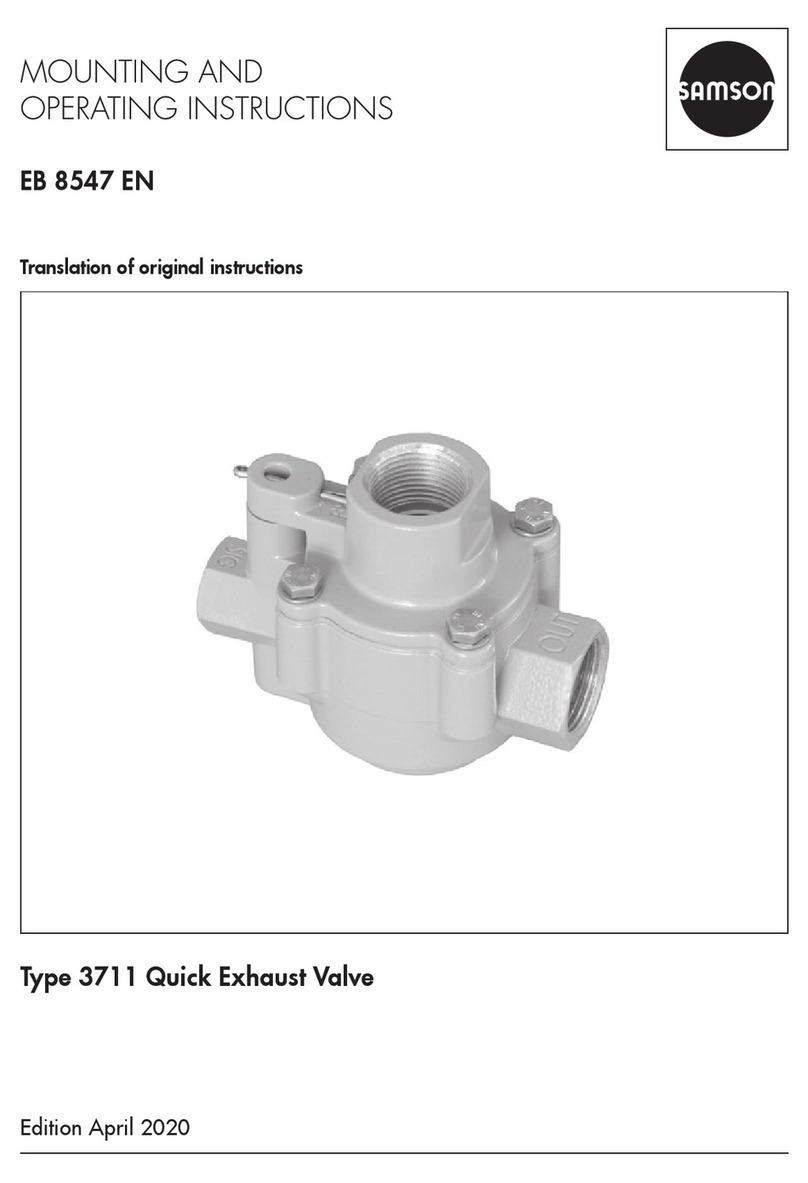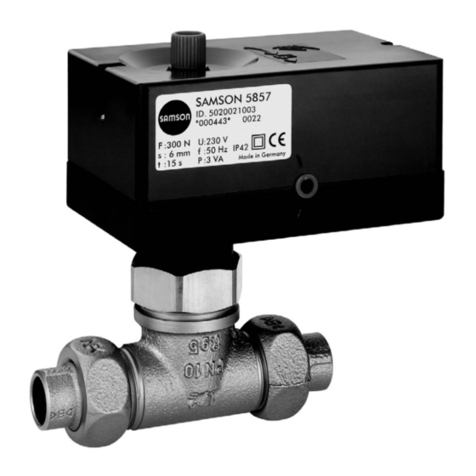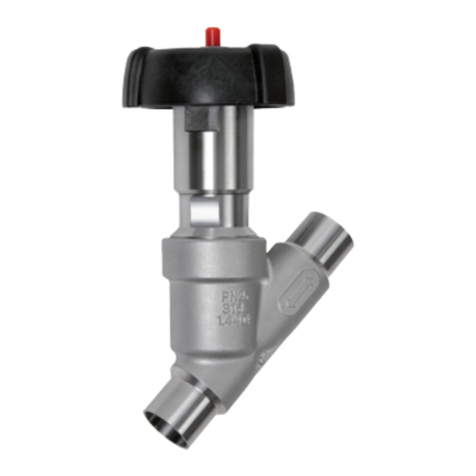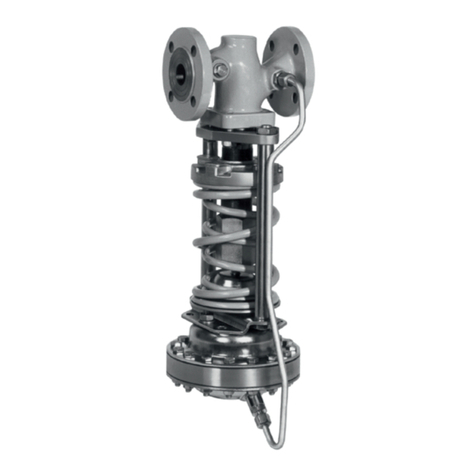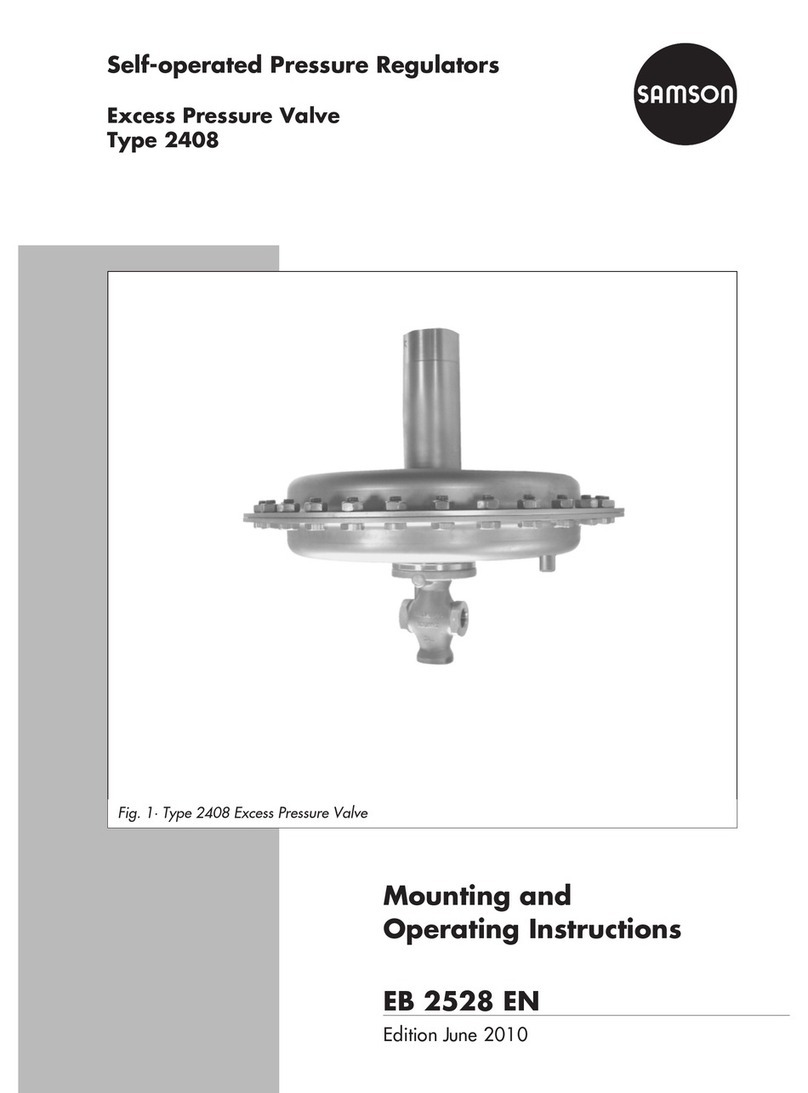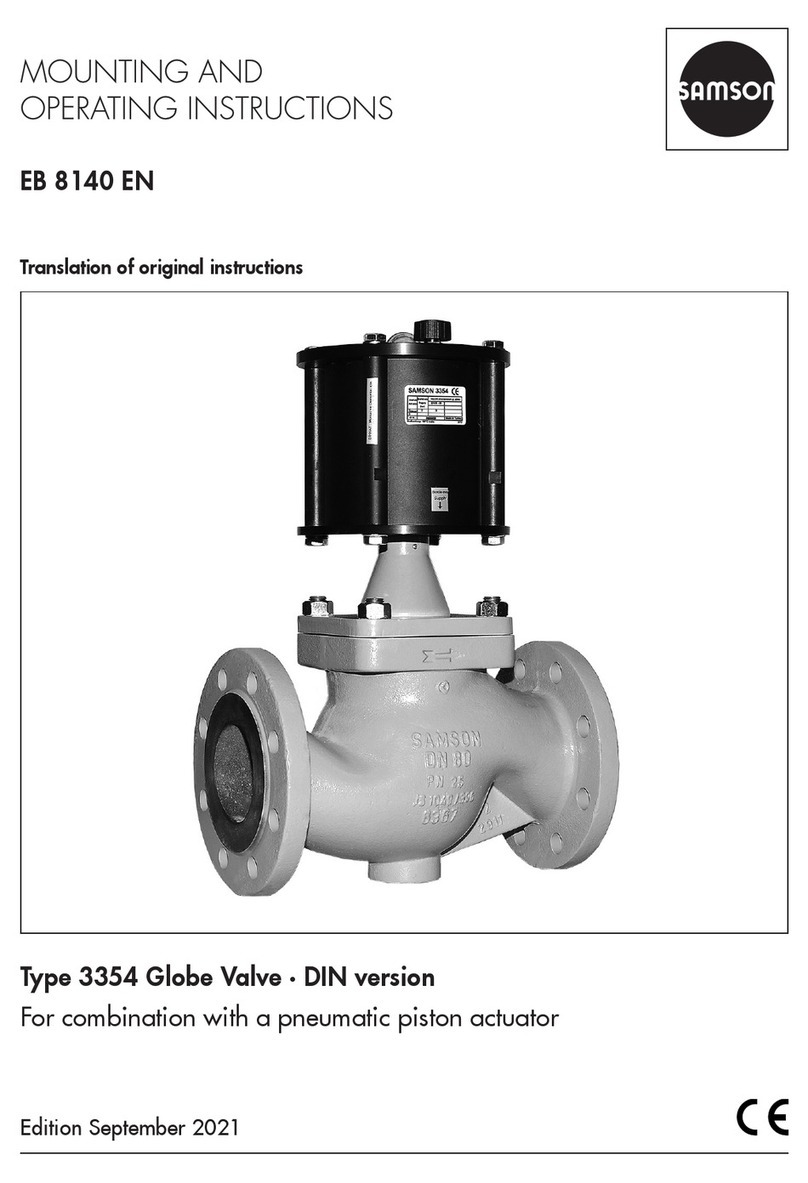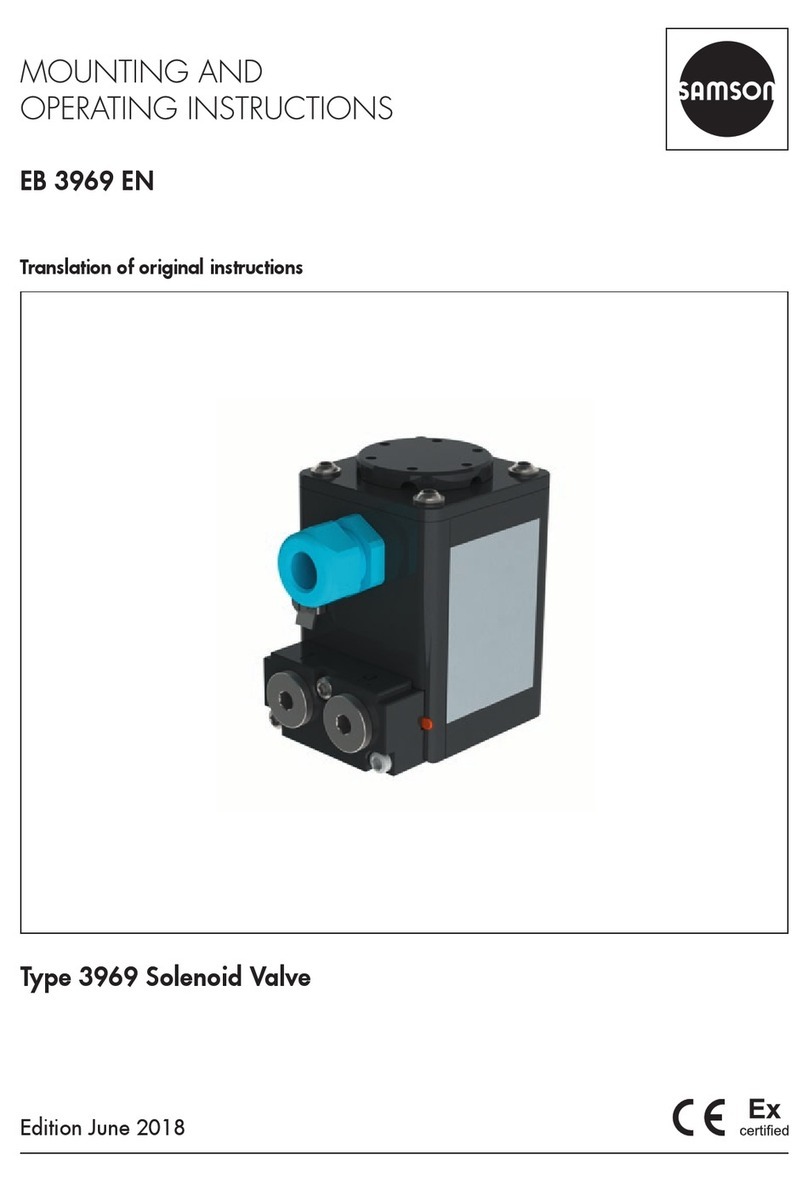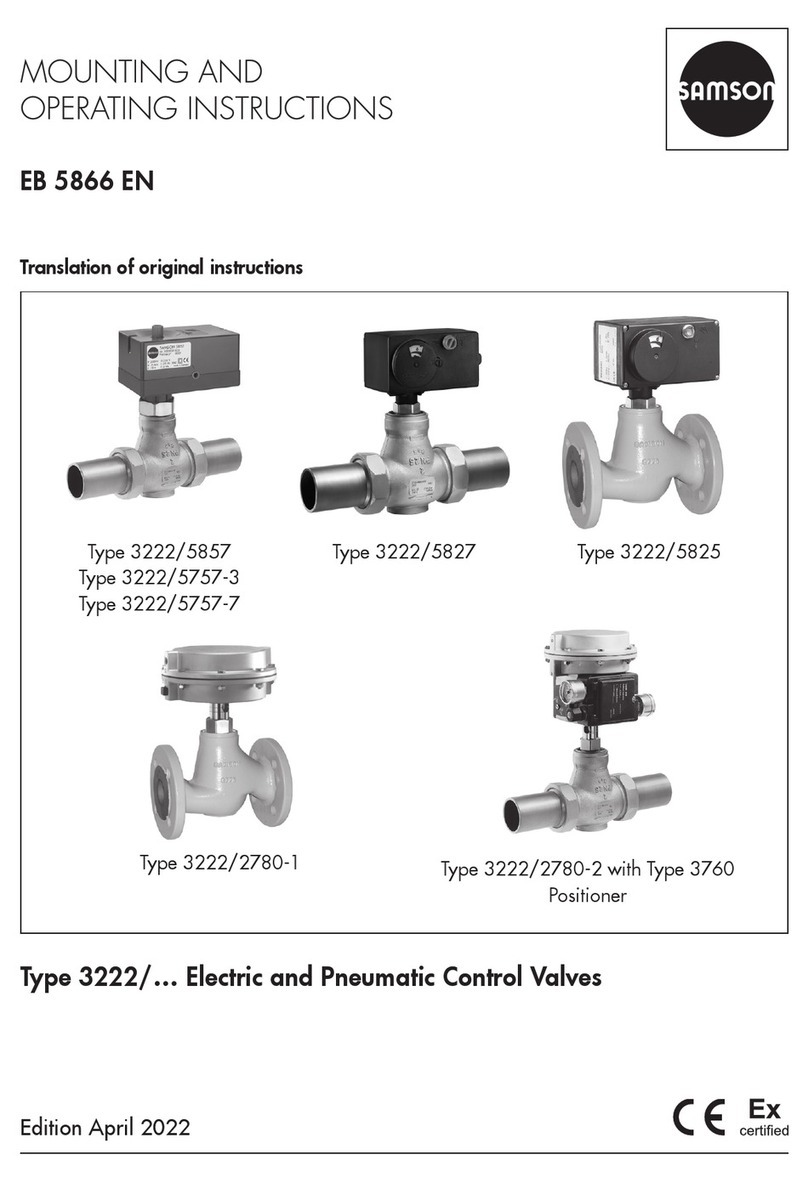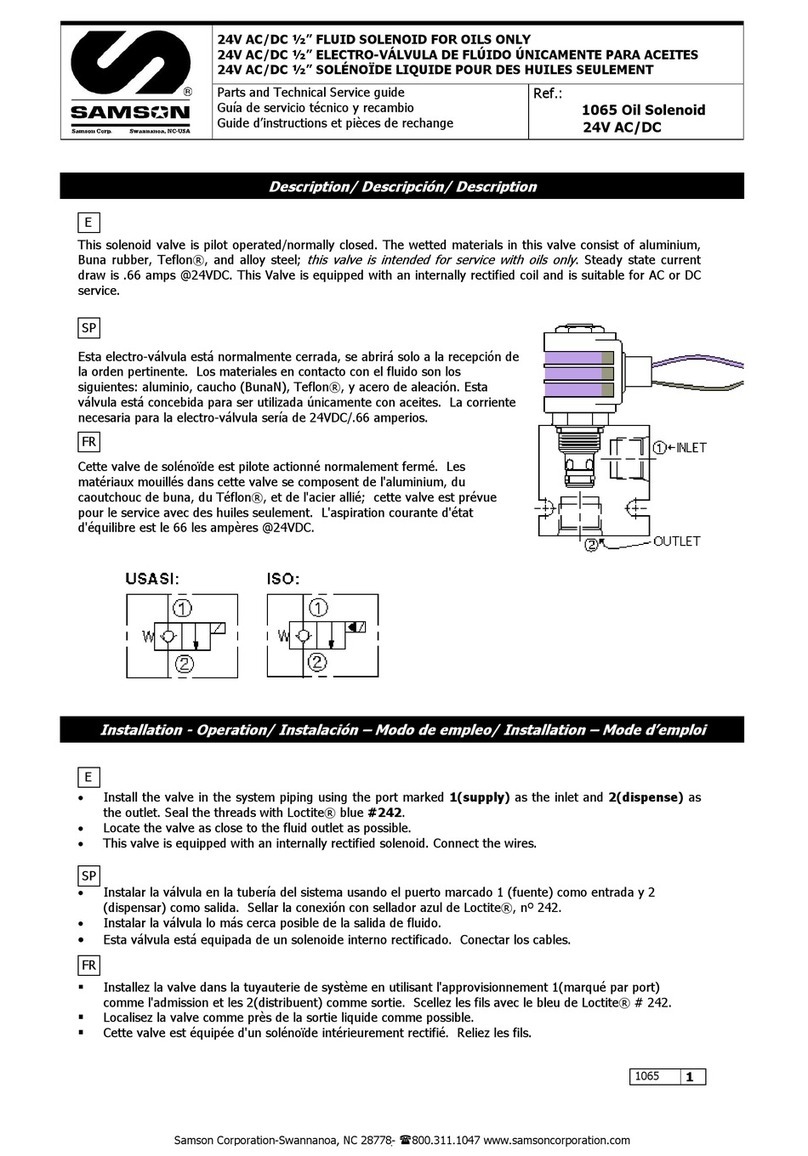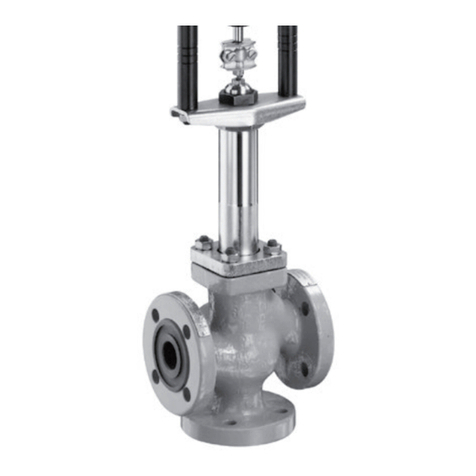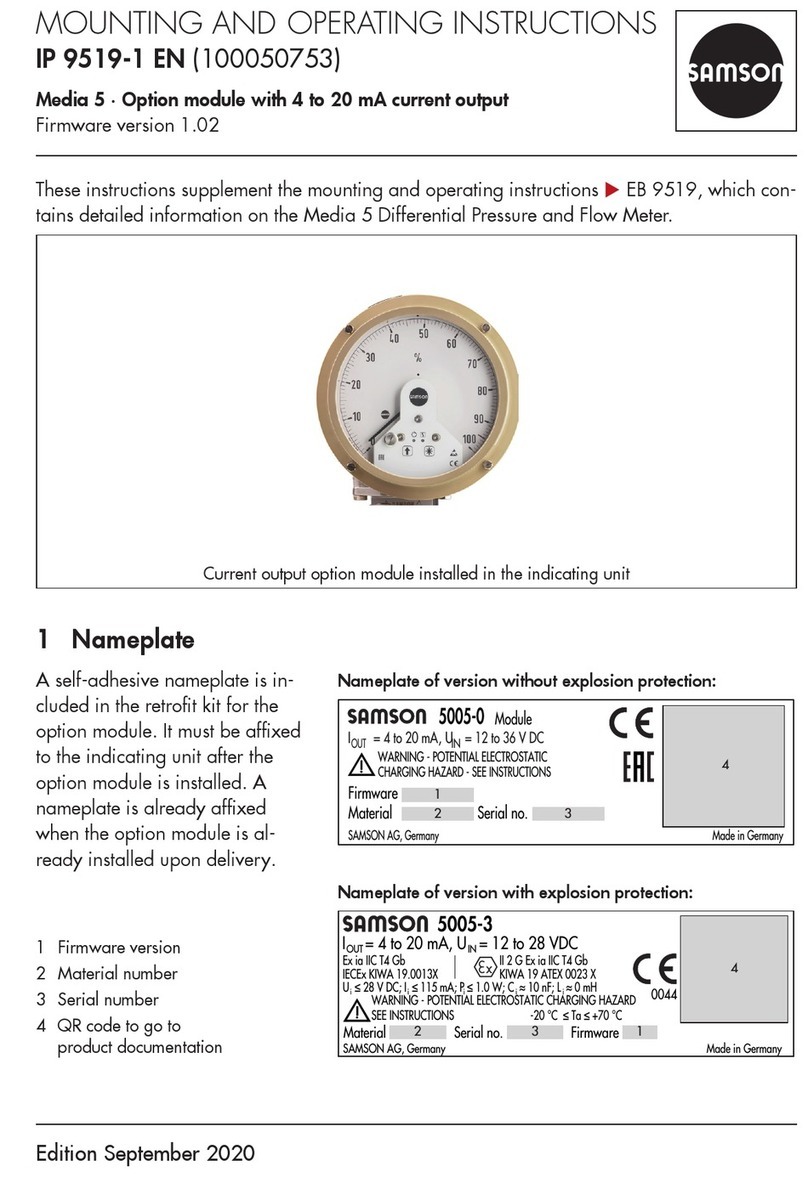
6 EB 2640 EN
Design and principle of operation
3 Design and principle of op-
eration
TheType2371-10andType2371-11Pres-
sure Reducing Valves consist mainly of a sin-
gle-seated angle valve with operating dia-
phragm and actuator housing.
ThesetpointoftheType2371-10isadjusted
pneumatically by an external air supply, e.g.
compressed air.
The set point of Type 2371-11 is adjusted
manually by tensioning the set point spring.
Themediumowsthroughthevalvebody(1)
in the direction indicated by the arrow. The
positionoftheplug(3)determinestheow
rate across the area released between plug
and valve seat (2). The valve closes when the
downstream pressure p2rises above the ad-
justed set point. The resulting output pressure
p2dependsontheowrate.
Any medium escaping from the test connec-
tion (11) indicates that the operating dia-
phragm (4) may be leaking or the diaphragm
has ruptured. The test connection of
Type2371-10isconnectedtoaexiblepipe
elbow to discharge any medium escaping
(leakage line connection).
Type2371-11·Version with manual set
point adjustment (seealsosection5.2on
page11)
In the idle state, the valve is kept open by the
set point springs (7). The valve closes when
the output pressure p2acting on the dia-
phragm (4) and the resulting force exceed the
force of the springs.
The set point is adjusted by an Allen key
(8mm),whichisinsertedthroughtheadjust-
ment opening (6.1) on top of the housing on-
to the set point screw (6). The blanking plug
mustrst beremoved.If necessary,theset
point screw can be secured by the locking
screw (12) in the upper plug section to prevent
the set point screw from loosening due to vi-
brations, causing the set point to change.
The washer (15) serves as a bottom end stop
to protect the diaphragm from overload and
to prevent parts from falling apart inadver-
tently while the regulator is being dismantled.
Turning the set point screw clockwise causes
the spring plate (7.1) to move upwards and
increases the spring force and the set point.
Turning the set point screw counterclockwise
relieves the spring tension and reduces the set
point.
Type2371-10·Version with pneumatic set
point adjustment (seealsosection5.2on
page11)
In the idle state, the valve is kept open by the
set point pressure pc(compressed air) applied
as the control pressure.
When the force created by the output pressure
p
2
acting on the diaphragm exceeds the force
resulting from the set point pressure pc, the
plug (3) moves towards the seat (2), closing
the passage. In this case, the ratio between p
1
and pCis not necessarily 1:1.
As the output pressure p
2
drops, the resulting
force reduces again. The valve is opened
again when the pressure falls below the set
point pressure pc.

